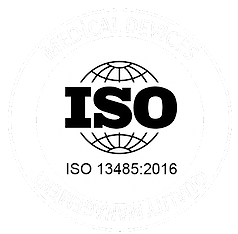Cardiac Rhythm Management:
Let’s get to the heart of the matter.
Developing a Cardiac Rhythm Management (CRM) device is a complex and challenging undertaking.
It requires expertise in a range of fields, including electrical engineering, embedded software engineering, and electrophysiology — a combination of skills that is not easy to find.
Optimizing CRM performance
While specific performance requirements may vary, many common requirements are shared across most implantable cardioverter-defibrillators (ICDs), pacemakers, and cardiac resynchronization therapy (CRT) devices.
- Accuracy: The device must accurately detect and diagnose arrhythmias, and deliver appropriate therapy in response.
- Reliability: The device must operate reliably over its expected lifetime, with an extremely low failure rate. CRM devices are among the most reliable electronic devices on the planet.
- Battery life: Implantable CRM devices must have a long battery life to minimize the frequency of device replacements.
- Patient monitoring: The majority of implantable devices today support wirelessly-enabled cloud-based patient monitoring and data collection.
- Ease of use: The device must be easy to implant, adjust, and manage, with user-friendly interfaces for both the healthcare provider and the patient.

Safety by Design
Safety isn’t a given — it happens by design. And that’s built into everything we do, including:
Result-based business model
Cash efficiency is a “do or die” proposition for any early stage company, and hourly-priced projects can quickly lead to cost and time overruns.
Our pricing is based on results, giving you the predictability you need to plan your budget and meet your funding milestones with confidence.
And with direct access to our project management system, you have real-time visibility into our progress so you always know where you are.
design for success
From napkin sketch to commercially-viable product, we take a holistic approach to product development, addressing all the required aspects for your device to be successful:
Technical
Ensuring the device can perform as required to deliver the intended clinical results
Usability
Ensuring the device can be operated in the intended clinical setting
Standards
Ensuring the design and development process is documented in compliance with ISO 13485:2016 and that the design meets the requirements imposed by relevant regulatory standards
Manufacturability
Ensuring manufacturing is feasible within your business case assumptions and identifying qualified suppliers and manufacturing partners
Financial
Optimizing device cost of goods sold (COGS)
“Working with Nocturnal has dramatically accelerated our time-to-market. In just one year, Nocturnal took our implantable cardiac monitor from a concept to a fully functional device with a mobile application and secure cloud connectivity.”
Jaeson Bang, Founder & CEO, Future Cardia


